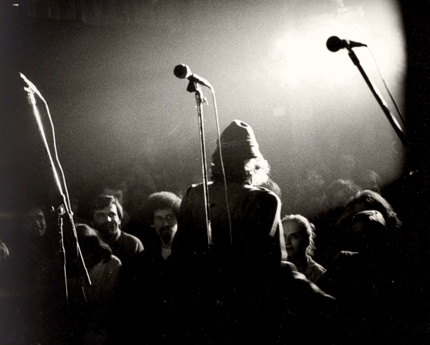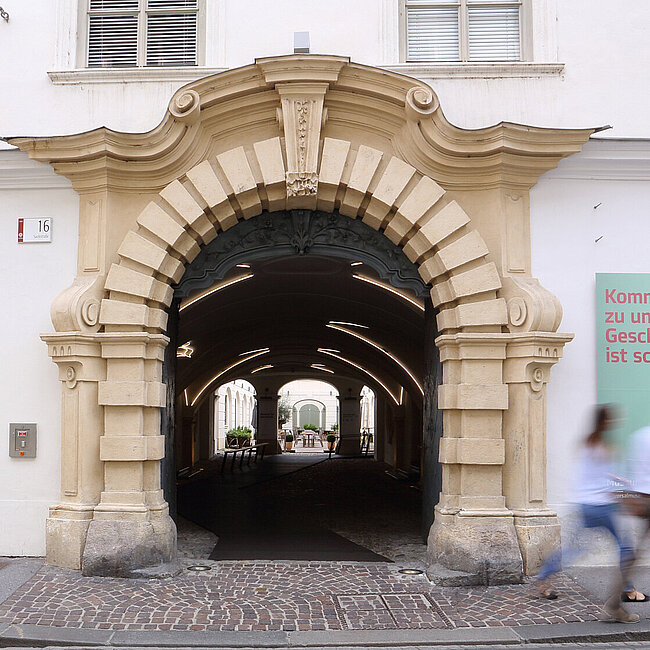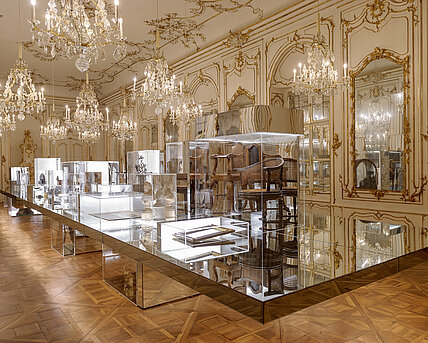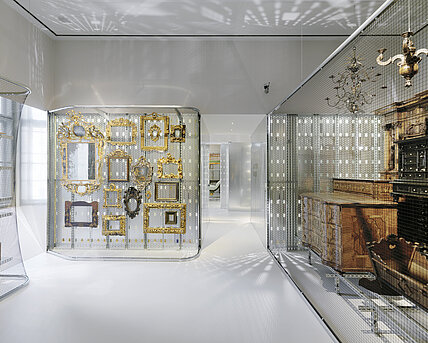Under the motto 'Collected History', around 2,000 of the total of 35,000 objects are arranged for viewing as a dense collage, ordered by such themes as 'eating and drinking', 'travelling and transportation', or 'research and knowledge'. Over a surface area of some 4,800 square feet, musical instuments, furniture, technical devices, women's, men's and children's fashion, monstrances, tools, tiles and busts, locks, lamps and burial crosses, jewellery, clocks, bicycles and much more besides are on show. The concept of interior design, of the historical premises, is based on a flowing wall covering made of metal cable trays, which simultaneously serve as supports for the exhibits. The light-bearing, freely-designable metal construction protects the inner walls on the one hand, and gives them the industrial, modular feel of a depot on the other.
In addition, the permanent exhibition was extended by objects from the Multimedial Collections as of autumn 2017, which, with their two million objects or more, are among the most important audiovisual collections in all of Austria. The presentation in the viewable storage depot allows a lasting insight into the comprehensive collections, as well as the history and perspectives of both History Museum collections.
























![View of the facade of the History Museum [Translate to English:] Ansicht Fassade Museum für Geschichte](/fileadmin/_processed_/0/b/csm_Fassade_MfG_2023_01_6cb4e733cf.jpg)
![View of the facade of the History Museum [Translate to English:] Ansicht Fassade Museum für Geschichte](/fileadmin/_processed_/c/4/csm_Fassade_MfG_2023_04_6a2cdd95e9.jpg)
![View of the History Museum [Translate to English:] Ansicht Fassade Museum für Geschichte](/fileadmin/_processed_/7/e/csm_Fassade_MfG_2023_05_21a494df70.jpg)
![View of the facade of the History Museum [Translate to English:] Ansicht Fassade Museum für Geschichte](/fileadmin/_processed_/b/b/csm_Fassade_MfG_2023_08_6952f0f15b.jpg)
![View of the History Museum [Translate to English:] Ansicht Fassade Museum für Geschichte](/fileadmin/_processed_/6/4/csm_Fassade_MfG_2023_11_8c1ea01b25.jpg)
![View of the History Museum [Translate to English:] Ansicht Fassade Museum für Geschichte](/fileadmin/_processed_/d/5/csm_Fassade_MfG_2023_13_29c2f96334.jpg)
![View of the History Museum [Translate to English:] Ansicht Fassade Museum für Geschichte](/fileadmin/_processed_/7/8/csm_Fassade_MfG_2023_14_56fc48282f.jpg)
![View of the History Museum [Translate to English:] Ansicht Fassade Museum für Geschichte](/fileadmin/_processed_/e/3/csm_Fassade_MfG_2023_15_68d0be69d1.jpg)
![View of the History Museum [Translate to English:] Ansicht Fassade Museum für Geschichte](/fileadmin/_processed_/3/9/csm_Fassade_MfG_2023_16_b4e9603f51.jpg)







